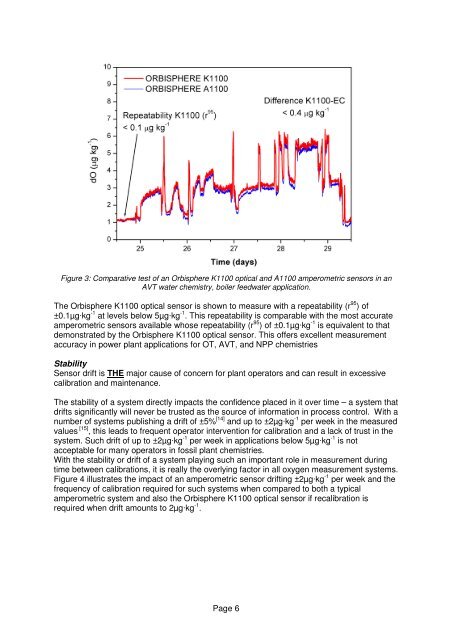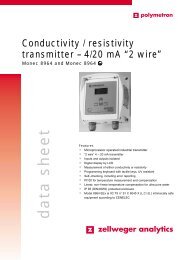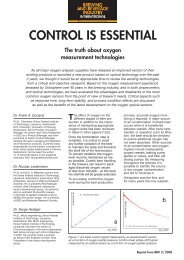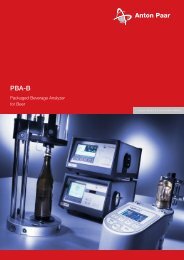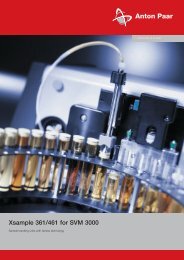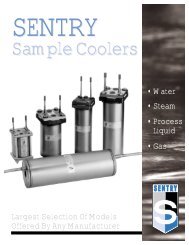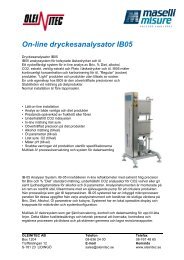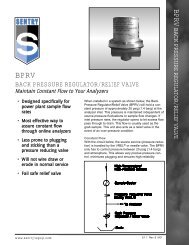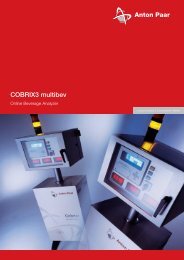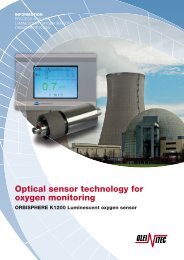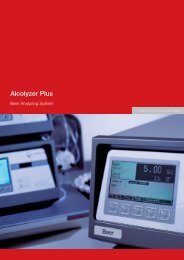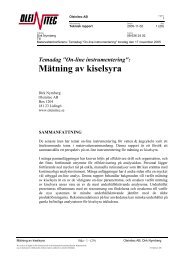A comparison of amperometric and optical dissolved oxygen ... - Hach
A comparison of amperometric and optical dissolved oxygen ... - Hach
A comparison of amperometric and optical dissolved oxygen ... - Hach
You also want an ePaper? Increase the reach of your titles
YUMPU automatically turns print PDFs into web optimized ePapers that Google loves.
Figure 3: Comparative test <strong>of</strong> an Orbisphere K1100 <strong>optical</strong> <strong>and</strong> A1100 <strong>amperometric</strong> sensors in an<br />
AVT water chemistry, boiler feedwater application.<br />
The Orbisphere K1100 <strong>optical</strong> sensor is shown to measure with a repeatability (r 95 ) <strong>of</strong><br />
±0.1µg·kg -1 at levels below 5µg·kg -1 . This repeatability is comparable with the most accurate<br />
<strong>amperometric</strong> sensors available whose repeatability (r 95 ) <strong>of</strong> ±0.1µg·kg -1 is equivalent to that<br />
demonstrated by the Orbisphere K1100 <strong>optical</strong> sensor. This <strong>of</strong>fers excellent measurement<br />
accuracy in power plant applications for OT, AVT, <strong>and</strong> NPP chemistries<br />
Stability<br />
Sensor drift is THE major cause <strong>of</strong> concern for plant operators <strong>and</strong> can result in excessive<br />
calibration <strong>and</strong> maintenance.<br />
The stability <strong>of</strong> a system directly impacts the confidence placed in it over time – a system that<br />
drifts significantly will never be trusted as the source <strong>of</strong> information in process control. With a<br />
number <strong>of</strong> systems publishing a drift <strong>of</strong> ±5% [14] <strong>and</strong> up to ±2µg·kg -1 per week in the measured<br />
values [15] , this leads to frequent operator intervention for calibration <strong>and</strong> a lack <strong>of</strong> trust in the<br />
system. Such drift <strong>of</strong> up to ±2µg·kg -1 per week in applications below 5µg·kg -1 is not<br />
acceptable for many operators in fossil plant chemistries.<br />
With the stability or drift <strong>of</strong> a system playing such an important role in measurement during<br />
time between calibrations, it is really the overlying factor in all <strong>oxygen</strong> measurement systems.<br />
Figure 4 illustrates the impact <strong>of</strong> an <strong>amperometric</strong> sensor drifting ±2µg·kg -1 per week <strong>and</strong> the<br />
frequency <strong>of</strong> calibration required for such systems when compared to both a typical<br />
<strong>amperometric</strong> system <strong>and</strong> also the Orbisphere K1100 <strong>optical</strong> sensor if recalibration is<br />
required when drift amounts to 2µg·kg -1 .<br />
Page 6


